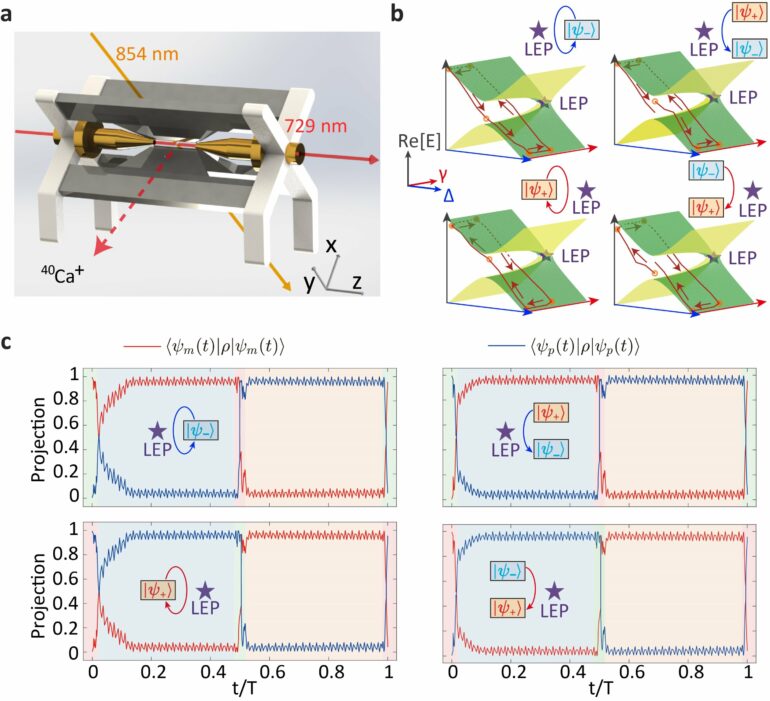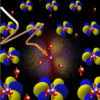Heat engines, converting heat into useful work, are vital in modern society. With advances in nanotechnology, exploring quantum heat engines (QHEs) is crucial for designing efficient systems and understanding quantum thermodynamics.
QHEs, operating as open quantum systems, exchange energy with external thermal baths, leading to quantum jumps. Therefore, the dynamics of QHEs can only be fully described and well understood using Liouvillian exceptional points (LEPs) rather than traditional Hamiltonian EPs, especially for qubit-based QHEs.
However, distinct from extensive studies on Hamiltonian EPs, LEPs and the related effects remain largely unexplored in quantum systems, particularly in quantum thermodynamics. LEPs offer a new approach by describing physical properties induced by quantum jumps.
In a paper published in Light: Science & Applications, a team led by Professor Mang Feng from the Innovation Academy for Precision Measurement Science and Technology of the Chinese Academy of Sciences, in collaboration with Prof. Hui Jing from Hunan Normal University and Prof. Şahin K. Özdemir from Pennsylvania State University, demonstrates chiral quantum heating and cooling and quantum state transfer using an optically controlled ion.
The work reveals chiral thermodynamic properties of quantum systems with non-Hermitian dynamics by dynamically encircling a closed loop without LEP involved. The encircling direction around the closed loop influences whether the system is acting as a heat engine or refrigerator.
Their study highlights the role of non-adiabatic transitions and the Landau-Zener-Stückelberg process in achieving chiral operation. This experiment connects, for the first time, the LZS process for chirality with LEP-related thermodynamic effects.
The experimental results, arising from the topological landscape of the Riemann surfaces, may open up new avenues in understanding chiral and topological behaviors in non-Hermitian systems and bridging chirality and quantum thermodynamics.
“Our findings reveal that chirality and heat exchange in our quantum system are linked to the encircling direction of the closed loops without the LEP. We show clearly that asymmetric mode conversion is directly related to the topological landscape of the Riemann surfaces and not necessarily to encircling an LEP of this quantum system, supporting previous reports for classical systems,” said Prof. Feng.
“This experiment paves the way for new explorations in quantum thermodynamics and the development of more efficient quantum chiral devices.”
The team’s experiment also underscores the importance of LEPs in optimizing QHE dynamics and enhancing their efficiency. These insights could lead to advancements in various quantum technologies, including energy conversion systems and quantum computing.
More information:
Jin-Tao Bu et al, Chiral quantum heating and cooling with an optically controlled ion, Light: Science & Applications (2024). DOI: 10.1038/s41377-024-01483-5
Provided by
Chinese Academy of Sciences
Citation:
Experiments demonstrates chiral quantum heating and cooling with an optically controlled ion (2024, September 2)



